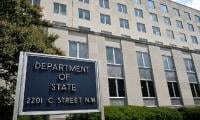ISLAMABAD: The ultimatum given by the Pakistan Democratic Movement (PDM) to Prime Minister Imran Khan to step down by December 31 has passed amid taunts and jeers and by government leaders. The opposition alliance, however, has failed to come up with any plausible justification for its failure to achieve its target. Since day one, sceptics had said that the PDM’s ambitious deadline was set without any deep reflection or even a consensus within the PDM. The alliance was meant to ratchet up enough pressure on the prime minister to bow out by the end of the year or face the intensification of the opposition’s protest campaign. It now appears that this was a hasty decision and certain PDM parties were in a hurry to accomplish their intended objective without the required groundwork.
It is instructive to look at the phases of the movement that were to unfold and the preparations done for their realization if Imran Khan did not resign by the stipulated cut-off date. Forty-seven days ago on Dec 15, the PDM stated after a summit meeting at Raiwind that if the premier did not quit by the deadline, the alliance would announce the schedule for launching a long march on the federal capital on Feb 1. No such deliberations are now planned on the day to firm up the date for the long march. The PDM is scheduled to meet on Feb 4. If at all the grouping resorts to this kind of protest, it may be held in March. Then there are differences in alliance over the conversion of the long march into a sit-in. The PPP is strongly opposed to this move.
The PDM’s second threat as part of its efforts to pile up pressure on Imran Khan was to resign from the assemblies. There is hardly any talk of this option now especially after the PPP publicly expressed its aversion to it. Asif Zardari is known to be opposed to any move that brings down the system, whereas the PML-N and JUI-F hold an opposing view, pushing for a hard line.
After the PDM was formed at an All Parties’ Conference hosted by the PPP in September, it had made a good start and rattled the government with a series of high profile events including public meetings. However, after the Lahore rally, the pressure of the PDM on the government began to wane. Simultaneously, the explosive rhetoric pushed by former Prime Minister Nawaz Sharif has also been missing. During the first few PDM public meetings, Nawaz Sharif had advanced his narrative in an uncompromising tone. It has been quite a while now since the PDM organized any powerful and meaningful activity. The harsh weather is being cited as one reason.
However, the result of this lull is that the government feels more confident and assured now. However, despite this lull, to say that the PDM can simply be wished away and dismissed as a non-entity is an erroneous view. It remains a potent force that can unnerve the government by a single display of street power.
The alliance has suffered a setback because of differences in its own ranks over the options of agitation to intensify its drive. The government’s success in changing the mind of the ECP to hold by-elections for seven federal and provincial seats created a difficult situation which gave rise to the differences within the PDM.
The PPP was insistent upon contesting the by-polls while the PML-N and JUI-F had the opposite view. Ultimately, the PML-N and JUI-F had to go along with the PPP’s stand. However, it seemed paradoxical for the PDM to vie for the by-elections on the one hand and talk about resigning from the assemblies on the other.
The PPP’s recommendation to move a no-confidence motion against Imran Khan, which it has repeatedly stressed, has not found favour with the other two major PDM components. The proposal reflects Asif Zardari’s position of working within the system in a bid to outsmart the arch-rival.
The reason why the PML-N and JUI-F have not created a scene with the PPP on proposals they do not agree with is to keep the grouping intact despite heavy odds. Not only do the two parties but the PPP too realizes that if the alliance breaks down, everyone would suffer and their weight and relevance would whittle down significantly. Despite its reservations over certain strategies of the PML-N and JUI-F, the PPP too doesn’t want to rock the boat so much that the alliance falls apart.
The talk of a no-trust motion, vacillation over the resignation of lawmakers, indecision on the date of the long march, the absence of a programme of any major public activity in the near future and the passing of the deadline for Imran Khan’s resignation without success have created a difficult situation for the PDM. For the time being, its biggest challenge is to maintain a consensus and take along all its component parties to remain a force to be reckoned with. It is still an open question how far the PDM has been successful in creating a chasm between the prime minister and the powers that be, which has been its major goal.
Federal Minister for National Health Services Syed Mustafa Kamal addressing on World Population Day ceremony on July...
CDA Chairman, Muhammad Ali Randhawa chairs a board meeting at the CDA Headquarters on July 10, 2025. —...
Balochistan Inspector General of Police Moazzam Jah Ansari giving shield during 102 bage passing out parade ceremony...
Economic Advisor, Ministry of Finance Dr Imtiaz Ahmed. — APP/FileISLAMABAD: A new controversy is brewing within...
Representational image of HIV blood test tube. — APP/FileISLAMABAD: In a major blow to Pakistan’s disease control...
Study, published in Journal of Surgical Specialties and Rural Practice







